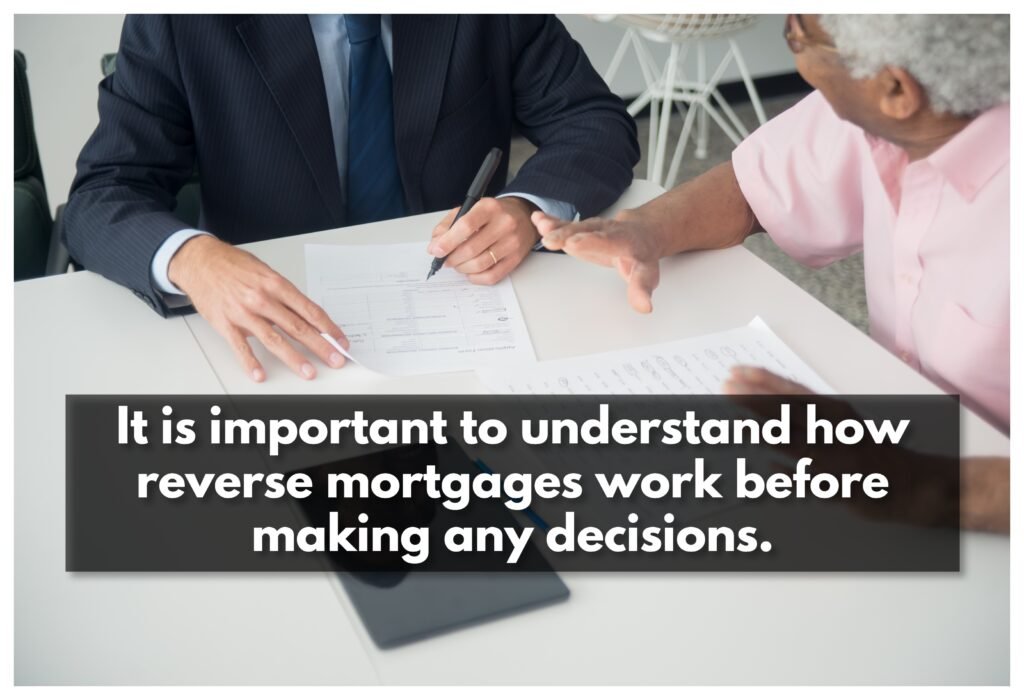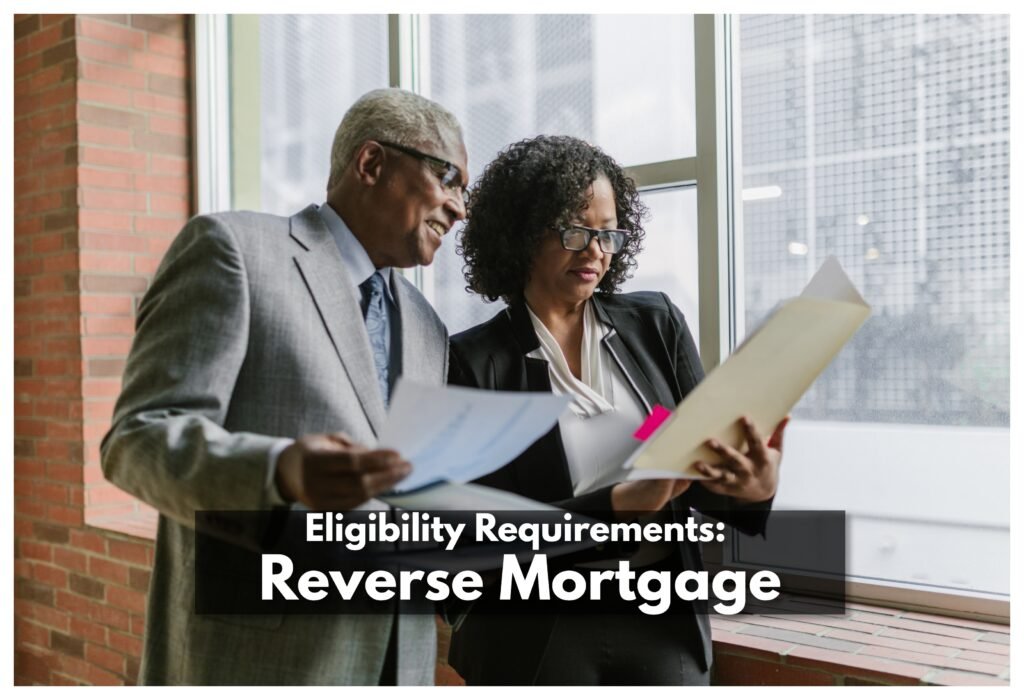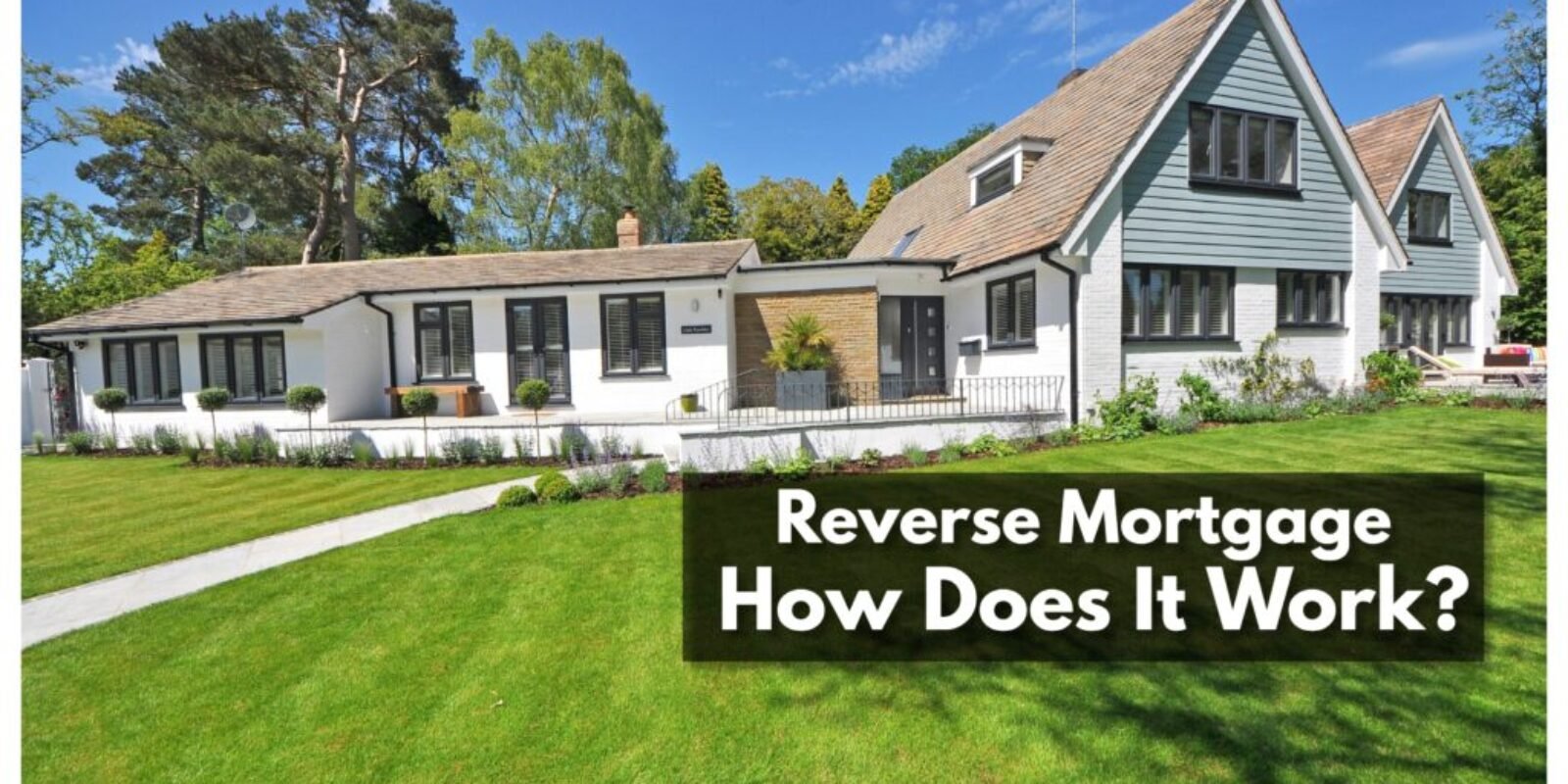Last Updated on June 27, 2025 by Julian Espinosa
Are you ready to unlock the hidden treasure in your home while continuing to enjoy the comfort of your familiar surroundings? A reverse mortgage might be the financial solution you’ve been searching for to enhance your retirement years.
Imagine having access to decades of home equity without the burden of monthly mortgage payments or the stress of relocating. For homeowners 62 and over, reverse mortgages offer a unique opportunity to transform your home’s value into a steady income stream, helping you maintain the lifestyle you’ve worked so hard to achieve.
This comprehensive guide will walk you through everything you need to know about reverse mortgages in 2025, from understanding the latest requirements and loan limits to exploring the different types available. You’ll discover how the application process works, what financial assessments involve, and most importantly, whether this financial tool aligns with your retirement goals.
We’ll explore the real benefits – like tax-free income and the ability to age in place – alongside the important considerations you should discuss with your family and financial advisor. Whether you’re looking to cover healthcare expenses, fund home improvements, or simply create more financial breathing room in retirement, understanding how reverse mortgages work empowers you to make informed decisions about your financial future.
Ready to explore how your home can work harder for your retirement dreams? Let’s dive into the world of reverse mortgages and discover if this path to financial flexibility is right for you.
What is a Reverse Mortgage?
Think of a reverse mortgage as the complete opposite of a traditional mortgage. Instead of making monthly payments to a lender, the lender makes payments to you, using your home’s equity as collateral. You maintain ownership of your home and can continue living there as long as you meet the loan requirements.
The HECM is the FHA’s reverse mortgage program that enables you to withdraw a portion of your home’s equity to use for home maintenance, repairs, or general living expenses, and HECM borrowers may reside in their homes indefinitely as long as property taxes and homeowner’s insurance are kept current.
Prefer to listen rather than read?
The beauty of this arrangement? The loan doesn’t need to be repaid until you no longer live in the home permanently, whether due to moving, selling, or passing away. This provides incredible flexibility for retirement planning while preserving your independence.
Regulated by FHA
The homeowner can receive a lump sum, a regular income, or a line of credit in exchange for ownership of their home. Reverse mortgages are regulated by the Federal Housing Administration and have specific criteria that must be met to qualify.

Can Help Cover Living Expenses
Receiving funds from a reverse mortgage can be a great way for seniors to supplement their retirement income and help cover living expenses. These funds can be used for a variety of things that can improve one’s quality of life and give them greater financial freedom. These funds can be used to cover medical expenses, including prescription medications and doctor visits.
Helpful for Those Without Health Insurance
This can be especially helpful for those without health insurance. The funds can also be used to make home improvements that can increase the value of the house, as well as increase its safety and accessibility. Additionally, these funds can help cover the costs of travel, entertainment, and other activities that can help seniors enjoy their golden years.
Reverse mortgages have become an increasingly popular option for retirees, as they provide a way to access the equity built up in their homes without having to move. This type of loan requires careful consideration of the details, however, to ensure that it is the right option for the individual. It’s important to understand how reverse mortgages work before making any decisions.
Eligibility Requirements
Reverse mortgages are designed to provide older homeowners with a way to access the equity they have built up in their homes over time. However, not all homeowners are eligible for a reverse mortgage. The eligibility requirements for a reverse mortgage include:
Age
To be eligible for a FHA HECM, the FHA requires that you be a homeowner 62 years of age or older. If you’re married, both spouses don’t need to be 62, but the younger spouse will be considered a “non-borrowing spouse,” which may affect the loan amount you can receive.
Homeownership
You must own your home outright, or have a low mortgage balance that can be paid off at closing with proceeds from the reverse loan. Reverse mortgage lenders generally require at least 50% equity in the home, though this can vary between lenders.

Financial Assessment
Here’s something that’s evolved significantly in recent years: A reverse mortgage financial assessment reviews a potential borrower’s financial situation, including credit history, employment history, debts, and income, to make sure that the borrower can afford to pay the ongoing costs of maintaining their property while receiving reverse mortgage payments.
This assessment ensures you can handle ongoing property expenses like taxes, insurance, and maintenance – protecting both you and the lender from potential problems down the road.
Mandatory Counselling Session by HUD
Before securing a reverse mortgage, you’ll need to complete a mandatory counseling session. This session ensures you fully understand the process, responsibilities, and implications of the loan, empowering you to make an informed decision about your financial future.
HUD-approved counselling sessions are also designed to help borrowers determine whether a reverse mortgage is the best option for their particular situation. The counselling session is mandatory and must be completed before applying for a reverse mortgage.
The Benefit of a Reverse Mortgage
Retirees can take advantage of reverse mortgages to improve their retirement planning. These specialized loans offer numerous advantages that can make life more enjoyable during retirement.
Financial Security
Imagine eliminating your mortgage payment while gaining access to additional funds. This can dramatically improve your monthly cash flow, allowing you to focus on enjoying retirement rather than worrying about making ends meet.

Tax-Free Income
The money you receive from a reverse mortgage isn’t considered taxable income, which means more money stays in your pocket compared to other income sources.
Stay in Your Home
Perhaps the greatest benefit is maintaining your independence and staying in the home where you’ve built memories and established roots in your community.
No Risk of Owing More Than Your Home’s Worth
Federal insurance protects you and your heirs – you’ll never owe more than your home is worth when the loan is repaid.
Types of Reverse Mortgages
It is crucial for individuals exploring the potential of a reverse mortgage to be aware of the various available options. There are five primary types of reverse mortgages:
Single-Purpose Reverse Mortgages
- These are an economical option for many homeowners, particularly single-purpose reverse mortgages which are backed by state and local government bodies and nonprofits.
- These mortgages are designed to be used for specific purposes, such as repairs and taxes, and may be an accessible option for individuals who have a lower income.
- Eligibility requirements may vary depending on the specific program.
- Single-purpose reverse mortgages may have lower fees and interest rates when compared to a traditional reverse mortgage, making them an appealing option for many people.
Proprietary Reverse Mortgages
- A type of loan offered by private lenders.
- This typically carries a higher interest rate than traditional mortgages.
- If you already own a home that’s appraised at a high value and has a small mortgage, you may be eligible to receive a higher loan amount.
- However, it’s important to consider that this type of loan will increase your debt and use up your equity.
- Taking out a proprietary reverse mortgage is an expensive way to borrow money, and could potentially limit your financial options in the future.
Home Equity Conversion Mortgages (HECMs)
- HECMs are the most common type of reverse mortgage and are backed by the U.S. Department of Housing and Urban Development.
Equity Loan Reverse Mortgages
- Are similar to HECMs in that they are backed by the FHA, but they have higher loan limits and are available to those with higher incomes.
Reverse Mortgages for Purchase
- This type of loan is used to purchase a new home and allows borrowers to receive payments from the lender to purchase their new home.
- The lender will provide the borrower with a lump sum for the purchase of their home, as well as monthly payments that can be used for the borrower’s living costs.
Each of these works in different ways to provide homeowners with access to their home equity. It’s important to understand the differences between these types of reverse mortgages before making any decisions.
The Application Process: What to Expect
The process of securing a reverse mortgage is relatively straightforward – once you have taken the time to do your research and understand the options available to you.
Step 1: Initial Research and Counseling
Start by researching lenders and completing your mandatory HUD counseling session. This education step is invaluable for understanding your options.
Step 2: Application and Financial Assessment
You’ll complete a detailed application and undergo the financial assessment to verify you can meet ongoing property obligations.

Your reverse mortgage application needs to be supported by the proper documents. This includes copies of your tax returns, pay stubs, and other financial documents. Having a thorough understanding of your finances and being able to provide the proper documentation will make the reverse mortgage process much easier.
Step 3: Home Appraisal
A HUD-approved appraiser will determine your home’s current market value, which directly impacts how much you can borrow.
Step 4: Loan Processing and Closing
Once approved, you’ll review all loan documents and close on your reverse mortgage, after which you can begin receiving funds according to your chosen payment plan.
Pros and Cons
One of the most critical decisions a retiree can make is whether or not to take out a reverse mortgage. It’s important for a retiree to carefully consider the pros and cons of taking out a reverse mortgage loan before making the decision.
Pros: Flexible Loan
The pros of a reverse mortgage include the fact that it’s a flexible loan that does not require repayment as long as the homeowner continues to live in their home. Homeowners can access the equity in their homes without having to sell their homes or take on a new monthly mortgage payment. The loan does not need to be paid back until the borrower no longer lives in the house, such as when they move out or pass away.
This can be beneficial to those who are on a fixed income and don’t want to worry about making monthly payments. The loan can also be used to cover home repairs, medical bills and other expenses. It can provide retirees with the cash they need to cover living expenses, medical bills, and other needs.
Cons: Cost More Than Traditional Mortgage Loans
On the downside, reverse mortgages can be expensive, often costing more than traditional mortgage loans. Typically, this is because there are no income or credit qualifications necessary to qualify for a reverse mortgage, and the lender is assuming all of the risks of the loan.
Lenders may limit how much homeowners can borrow, so it is important to understand the rules and regulations of the lender and their loan program before signing any paperwork. When a homeowner passes away, the loan plus interest must be paid in full from the borrower’s estate.
Considering the pros and cons of a reverse mortgage is essential for potential borrowers and their heirs. A reverse mortgage can be a helpful financial tool for seniors who are looking to supplement their retirement income, but it’s important to understand the risks and pitfalls involved with this type of loan.
To Sum It Up
A reverse mortgage can be an excellent tool for the right person in the right circumstances. It works best for homeowners who plan to stay in their homes long-term, have significant equity, and want to improve their financial flexibility in retirement.
However, it’s not right for everyone. Consider your long-term housing plans, your desire to leave your home to heirs, and whether other financial strategies might better serve your needs.
Before making any decision, discuss your options with family members and consult with a financial advisor who can help you understand how a reverse mortgage fits into your overall retirement strategy.
Disclaimer
The content provided on MySeniors.World is for informational purposes only and is not intended as either financial or medical advice. Always consult a qualified professional before making any investment or health-related decisions.
Posts may contain affiliate links, meaning we earn a commission – at no additional cost to you, if you click through and make a purchase. Your support helps us continue providing valuable content.
FAQ: Reverse Mortgage
- Will I lose ownership of my home with a reverse mortgage?
- No, you retain full ownership of your home. Your name stays on the title, and you can sell, make improvements, or leave the home to heirs just like any homeowner.
- What happens if I need to move to assisted living?
- If you permanently leave your home for more than 12 consecutive months, the loan becomes due. However, you or your heirs can sell the home to repay the loan or refinance if circumstances change.
- Can the lender force me to sell my home?
- No, as long as you meet your obligations (living in the home, maintaining it, and paying property taxes and insurance), you can stay in your home for life.
- How much money can I get from a reverse mortgage?
- The amount depends on your age, your home’s value, current interest rates, and which type of reverse mortgage you choose. Generally, the older you are and the more valuable your home, the more you can borrow.
- Will a reverse mortgage affect my Social Security or Medicare benefits?
- No, reverse mortgage proceeds don’t affect Social Security or Medicare benefits. However, they could potentially impact need-based programs like Medicaid or Supplemental Security Income if you accumulate funds in bank accounts.
- What if my home’s value decreases after I get a reverse mortgage?
- You’re protected by federal insurance. You’ll never owe more than your home is worth when the loan is repaid, regardless of how much you’ve received or how your home’s value has changed.
- Can I pay off my reverse mortgage early?
- Yes, you can repay your reverse mortgage at any time without penalty. Some borrowers choose to make payments to preserve more equity for their heirs.
References
- U.S. Department of Housing and Urban Development. “HUD FHA Reverse Mortgage for Seniors (HECM).” HUD.gov, 2025.
- Reverse.mortgage. “2025 HECM Reverse Mortgage Limits Surge to $1,209,750.” March 14, 2025.
- FHA.com. “How to Qualify for an FHA Reverse Mortgage (HECM).” April 13, 2024.
- Reverse.mortgage. “HECM: A Simple Guide to Home Equity Conversion Mortgages.” March 17, 2025.
- Investopedia. “Reverse Mortgage Financial Assessment: What It Is, How It Works.” 2025.
- Reverse.mortgage. “Understanding Reverse Mortgage Rules: Your 2025 Guide.” March 21, 2025.
- Federal Trade Commission. “Reverse Mortgages.” March 6, 2025.



